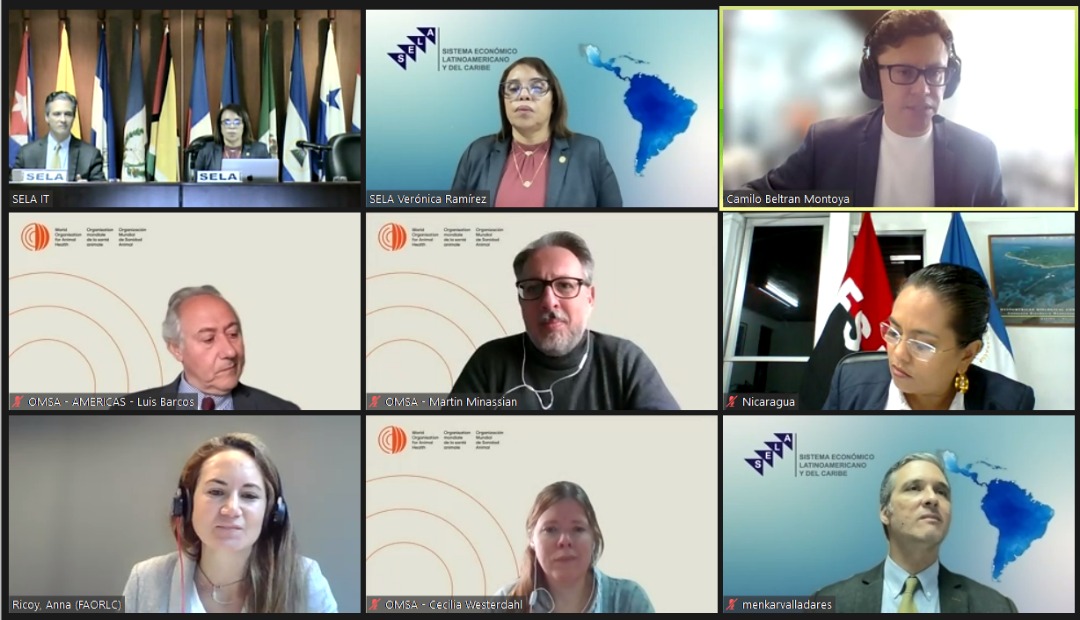


On Tuesday 2 August, we participated in the opening session of the seminar Threats and vulnerabilities resulting in risks for the agricultural sector and food systems in Latin America and the Caribbean organised by the Community of Latin American and Caribbean States (CELAC) and the Latin American Economic System (SELA).
The seminar aimed to identify and analyse threats and vulnerabilities to food systems in the countries of the region, with a focus on the agricultural sector and its impact on food security and the resilience of the population.
In addition, information was exchanged on the work, studies and activities carried out by regional and sub-regional organisations such as CARICOM, IICA, FAO and WOAH and their role in the prevention and reduction of the impact of emergencies and disasters on the agricultural sector and food systems.
Our Regional Representative, Dr. Luis Barcos, was invited to give opening remarks and highlighted the importance of collaborative work between organisations to address factors affecting animal production, such as diseases, climate, and natural disasters.
Furthermore, Dr. Martin Minassian, technical assistant of the Regional Representation for the Americas, gave a presentation where he shared the work carried out by our organisation. He highlighted the results of the collaborative work in the framework of the GF-TADs in the outbreak of African swine fever in the Dominican Republic and Haiti, as well as the programme on the global impact of animal diseases (GBADs), and the work of the network WOAH Collaborating Centres in Veterinary Emergencies (EmVetNet). He stressed the importance of collaboration and the need to apply standardised measurement tools to optimise decision-making in animal health, orienting it towards a preventive model. He also stressed the importance of leveraging the capacities available in the Americas to involve Veterinary Services as key actors in the provision of safe and plentiful food and the resilience of both animal and human populations to natural disasters.

